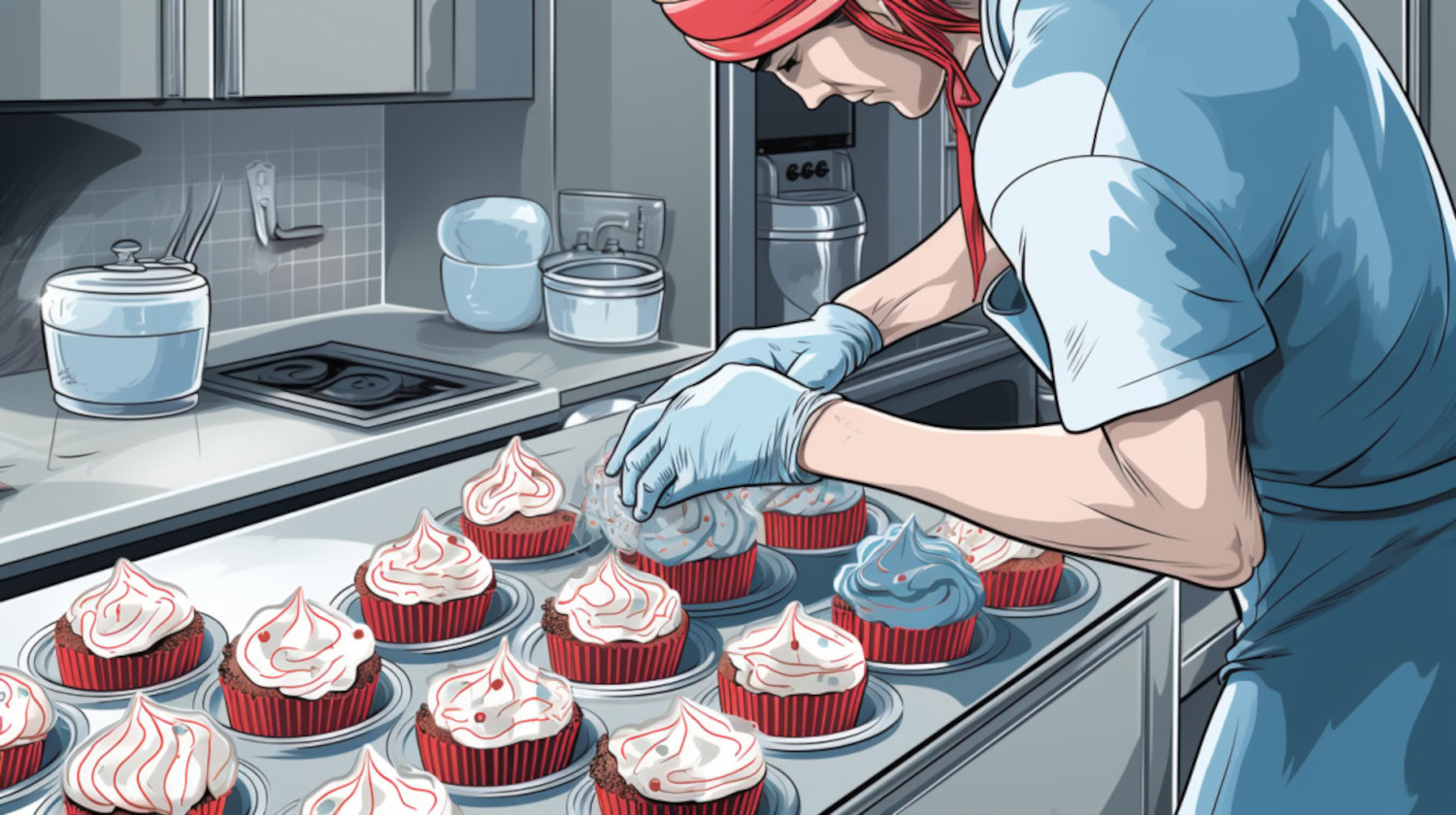In This Article
When joint pain and sleepless nights became everyday struggles, Jordan knew it was time for a change.
"I was constantly exhausted and in pain," Jordan recalled. "I knew something natural had to exist that could actually make a difference."
After trying to remedy these struggles with various prescriptions and over-the-counter (OTC) medications, they were left with little to no relief. Like many people struggling to get restful sleep, Jordan finally found significant improvements to their wellbeing through medical cannabis consumption.
How Common Are Sleep Issues and Chronic Pain?

Disclaimer: The names and and some details in this story have been changed to protect patient privacy.
According to recent findings from the CDC, one in three American adults struggle getting seven hours of sleep each night.
Persistent physical pains are often tied to sleep disturbances. Poor sleep has been found to increase feelings of chronic pain, and those discomforts are known to disrupt restful sleep.1
That loop was Jordan's reality. Even minor physical activity, including errands and self-care, became daunting over time. Traditional sleep aids failed to produce the desired beneficial results. At that point, Jordan decided to speak with a medical professional about cannabis.
Using NuggMD, they connected with a physician in their state. During their appointment, Jordan’s doctor discussed the interconnectedness between quality rest and pain reduction, noting that consistent quality rest can result in less pain during waking hours.
The conversation also explored how the cannabinoid THC binds to the body's endocannabinoid system (ECS), namely the CB1 receptors. Through this interaction, THC is believed to influence opioid receptors and the body's GABA system. Researchers have stated that the compound influences the release of modulating neurotransmitters which help promote relaxation and sleep.2,3
At the end of the appointment, Jordan was prescribed a medical cannabis recommendation, and was able to obtain their card to make their first purchase at a licensed dispensary.
The Ideal Outcome
Jordan noticed huge improvements after incorporating an indica-dominant, sedation-inducing strain into their nightly routine.
"It helps a lot with getting to sleep."
Soon after, Jordan began waking up refreshed rather than exhausted. No longer burdened by the fatigue and irritability, they reported an uptick in positive feelings throughout the day.
“Better sleep makes me a happier person,” Jordan said. “And less body pain allows me to do more physical activities.”
Feeling happier, better rested and in less pain, Jordan returned to participating in activities like gardening and long weekend hikes with family, all without any feelings of pain or discomfort.
During the initial doctor visit, Jordan learned that an all-cannabis treatment does not always work for every condition. In many cases, cannabis may supplement existing medication or treatments. And in some cases, it may not be beneficial at all. With such varied responses, it’s important that patients speak with medical professionals to determine the best option for their needs.
With guidance from their doctor, Jordan tried an all-cannabis approach. Over the next several weeks, they found that it worked to ease their pain and sleep issues. With such an improvement in their condition, Jordan decided it was no longer necessary to use their prescribed sleep medication.
Today, they rely on trusted brands available in their state to help keep their sleep in check. While not all indica strains have sleep-inducing effects, Jordan has found a reliable roster of indica-dominant strains that promote physical relief and relaxation. They now continue to refine their regimen, making updates or adjustments when needed.
Family Support

Many use medical cannabis in secret, or prefer not to use it even if they’ve found relief. This reluctance may come from societal pressures, or stigmas. Thankfully, Jordan’s loved ones represent an ongoing shift in perception around medical cannabis.
“My family knows,” said Jordan. “They support it because it helps me.”
Jordan’s story is just one of millions from Americans who have tried medical cannabis to address ailments like chronic pain and sleep struggles. For many, exploring medical remedies starts with some entry-level questions to get the conversation started, such as: What is cannabis’ potential to improve sleep? Can it be an effective alternative pain reliever? And, what product is best for my needs?
Does Cannabis Help You Fall Asleep? Can it Improve Sleep Quality?

Many cannabis consumers claim cannabis improves their sleep, but clinical analysis has yielded mixed results so far. Some studies suggest it may help individuals with anxiety or depression fall asleep faster. Others indicate potential adverse effects on sleep quality, especially with long-term use.
With conclusive results lacking, it's essential to consult with a healthcare professional before using cannabis for sleep or any other medical issues.
How Does Cannabis Work as a Painkiller?
Research has found that cannabis can help alleviate pain through the cannabinoid THC, which binds to CB1 receptors in the brain, influencing pain perception. THC isn’t the only cannabinoid that can ease pain. Studies suggest that CBD has anti-inflammatory properties that may also help with pain reduction.
What is the Best Cannabis Strain for Pain and Sleep?
The effectiveness of a cannabis strain on pain relief and sleep depends on a strain’s unique profile. The balance and dosage of plant compounds, including but not limited to THC, CBD, minor cannabinoids, and terpenes, determines its likely effects, including its ability to help with pain and/or sleep.
Rather than focusing on indica or sativa classification, consult with a trusted physician and/or budtender. These skilled experts can help identify certain strains and plant compounds that may best help with specific conditions and symptoms.
What is the Best Cannabis Ratio for Pain? (CBD:THC)
Various CBD:THC ratios are used for pain management. Balanced ratios like 1:1 claim to offer a combination of pain relief and reduced psychoactive effects. Higher CBD ratios (e.g., 20:1) may be preferred by those seeking minimal or no intoxicating effects from THC. However, studies note that higher THC ratios might provide more potent analgesic effects.4
Patients can find their ideal dose through the “starting low, going slow” method. This is the gradual increase of dosage over one or more prolonged consumption sessions. It may be best to note how each consumption session feels, noting the specifics of the product and dosage taken. This can help, in addition to consulting with a doctor.
References
- Jain SV, Panjeton GD, Martins YC. Relationship Between Sleep Disturbances and Chronic Pain: A Narrative Review. Clinics and Practice. 2024;14(6):2650-2660. doi:https://doi.org/10.3390/clinpract14060209 ↩︎
- Safi K, Sobieraj J, Błaszkiewicz M, Żyła J, Salata B, Dzierżanowski T. Tetrahydrocannabinol and Cannabidiol for Pain Treatment—An Update on the Evidence. Biomedicines. 2024; 12(2):307. https://doi.org/10.3390/biomedicines12020307 ↩︎
- Safi K, et al. THC and CBD for Pain Treatment—An Update on the Evidence. Biomedicines. 2024;12(2):307. doi:10.3390/biomedicines12020307 ↩︎
- Peng J, et al. Molecular mechanism and therapeutic effect of CBD. Basic Clin Pharmacol Toxicol. 2022;130(4):439-456. doi:10.1111/bcpt.13710 ↩︎
The information in this article and any included images or charts are for educational purposes only. This information is neither a substitute for, nor does it replace, professional legal advice or medical advice, diagnosis, or treatment. If you have any concerns or questions about laws, regulations, or your health, you should always consult with an attorney, physician or other licensed professional.




